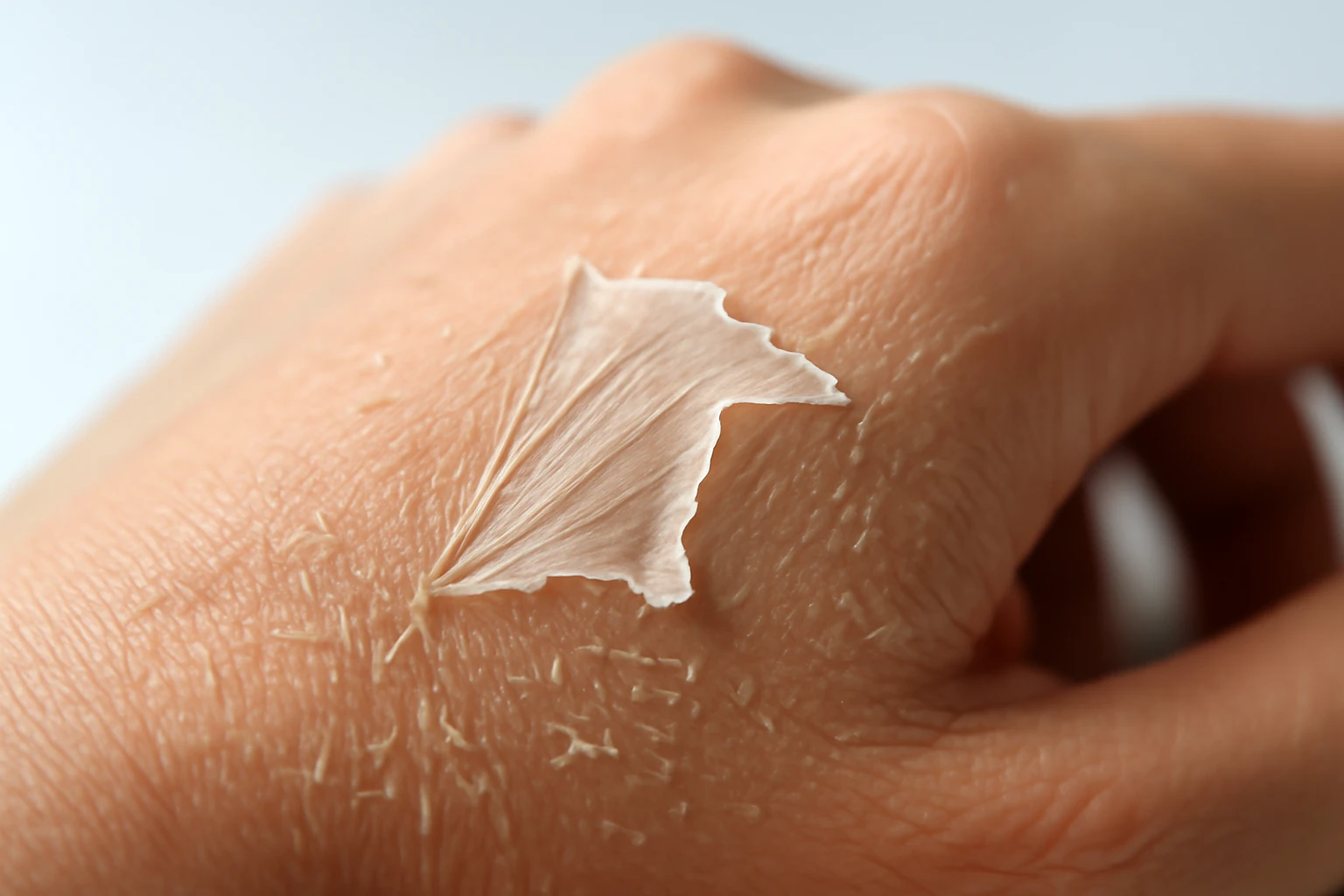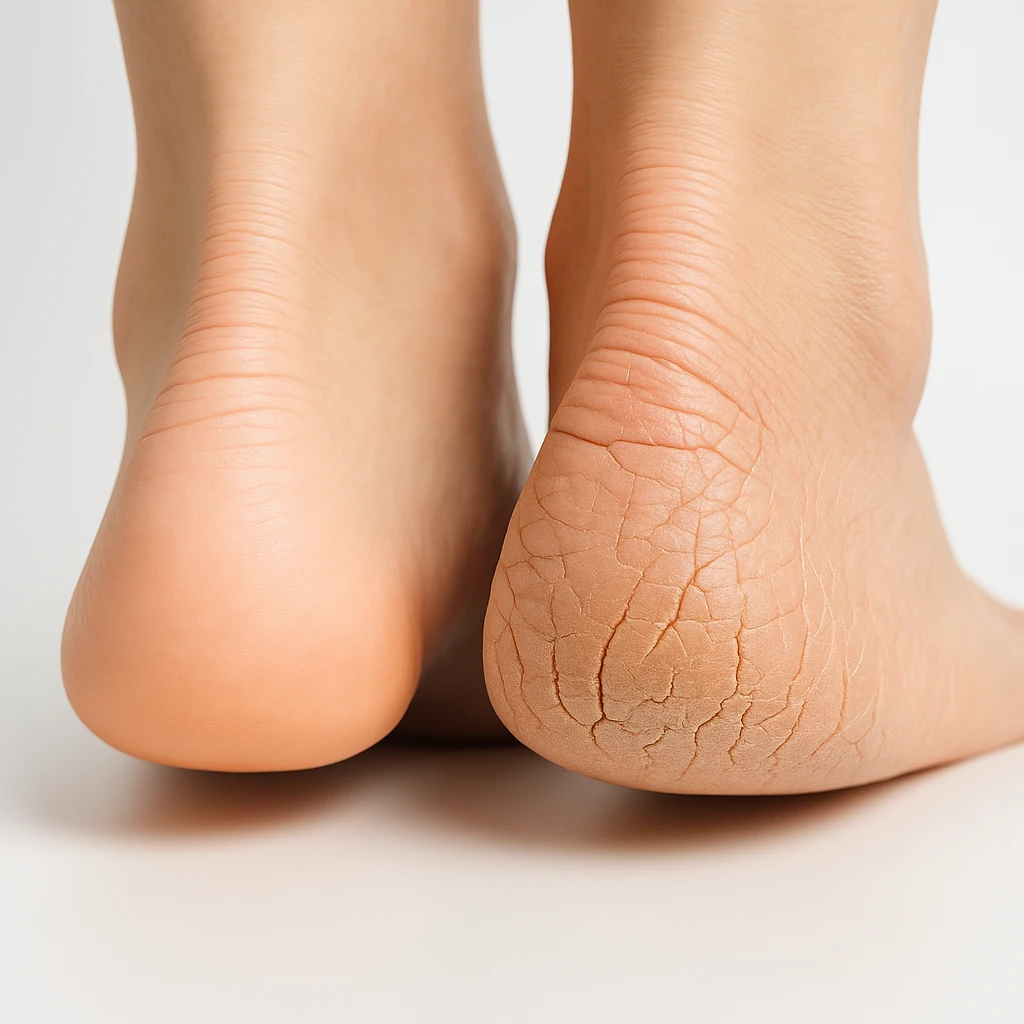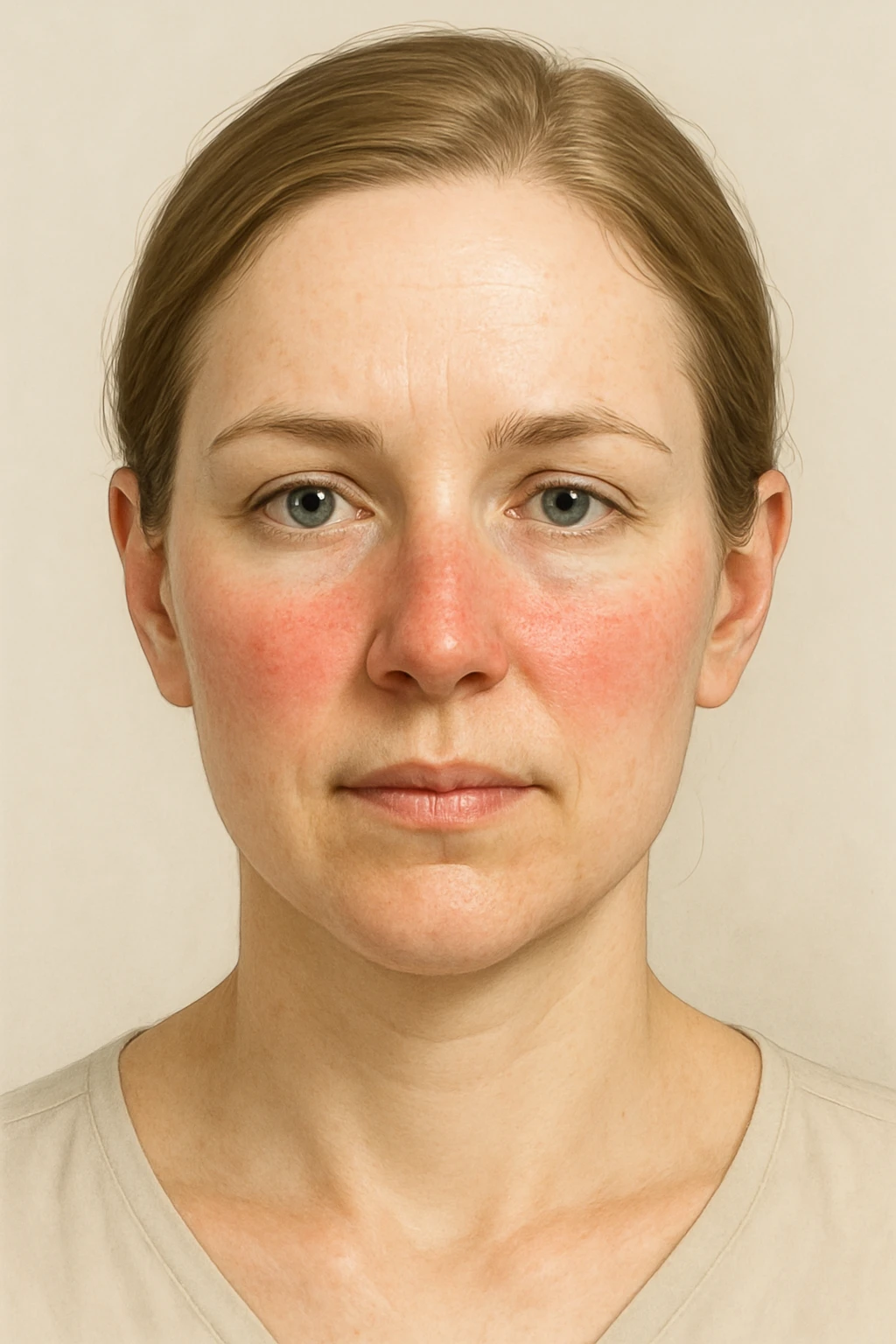Causes and Symptoms of Skin Peeling: What You Need to Know
What is Skin Peeling?
Definition of Skin Peeling
Skin peeling, also known as desquamation, occurs when the outer layer of your skin sheds or comes off. This is a natural process that helps remove dead skin cells and refresh the skin. While it’s often part of the skin’s normal renewal cycle, excessive peeling or peeling in certain areas can indicate underlying issues that may need attention.
When Skin Peeling is Normal
In many cases, skin peeling is harmless and temporary. Common causes include:
- Sunburn, where the skin peels to shed damaged cells.
- Minor skin irritation from environmental factors, like dry air or a mild allergic reaction.
After experiencing these conditions, peeling typically resolves on its own as the skin heals.
When to Seek Medical Help
While occasional skin peeling is normal, persistent peeling, especially when accompanied by:
- Pain
- Redness
- Swelling
- Fever
can be a sign of a more serious condition. In these cases, it’s important to seek medical advice. Conditions like skin infections or autoimmune disorders can cause ongoing peeling and require professional treatment to manage and prevent complications.
Common Causes of Skin Peeling
External Factors: Sunburn and Infections
Skin peeling is commonly caused by external factors such as sunburn or skin infections. When the skin is exposed to excessive sun, it can burn, damaging the outermost layers of the skin. In response, the skin begins to peel to shed the damaged cells and regenerate healthy tissue. Similarly, skin infections, including fungal or bacterial infections, can irritate the skin and cause peeling as the body attempts to heal itself. Both sunburn and infections often lead to temporary peeling that resolves with appropriate care.
Underlying Health Conditions
Chronic skin peeling can also be a result of underlying health conditions. For example, eczema and psoriasis are two common immune system disorders that cause persistent skin irritation and peeling. These conditions can trigger inflammation, making the skin dry, cracked, and flaky. When left untreated, peeling may continue, sometimes leading to more severe skin complications. In addition, other immune-related conditions can also contribute to chronic peeling, requiring medical management to control the symptoms and prevent further skin damage.
Genetic Conditions: Peeling Skin Syndrome
Peeling Skin Syndrome (PSS) is a rare genetic disorder that causes the skin to peel continuously, often from birth. This condition is caused by mutations in the TGM5 gene, which plays a critical role in skin structure and function. Individuals with PSS experience painless, persistent peeling of the skin, particularly on the hands and feet. Since PSS is genetic, it typically requires ongoing management to help alleviate symptoms, but there is currently no cure for the condition. People with PSS may need specialized care to protect their skin and manage the effects of continuous peeling.
Symptoms of Skin Peeling
Itching, Rash, and Dryness
Peeling skin is often accompanied by other common symptoms, including itching, dryness, and rash. These symptoms can occur as the skin becomes irritated or damaged. Itching often results from the skin’s reaction to dryness or inflammation, while rash can develop due to underlying conditions such as allergies or skin infections. The combination of peeling with these symptoms is a sign that the skin may be healing from irritation or an external trigger.
Chronic Peeling and Other Warning Signs
In some cases, peeling skin becomes chronic, especially in conditions like peeling skin syndromes. This ongoing peeling can be particularly noticeable on areas like the hands and feet. In addition to chronic peeling, other more severe symptoms may occur, such as swelling, redness, or even fever. These warning signs may suggest an underlying health condition, such as an infection or an autoimmune disorder. If these symptoms accompany peeling, it’s important to consult a healthcare professional for further evaluation and management.
How is Skin Peeling Diagnosed?
Physical Examination and Medical History
To diagnose the cause of skin peeling, a doctor will begin with a physical examination and review your medical history. During the examination, the doctor will assess the appearance of the affected skin, noting any signs of inflammation, redness, or infection. They will ask about your symptoms, such as when the peeling started, whether it is accompanied by other issues like itching or swelling, and any previous skin conditions. This helps the doctor narrow down potential causes of the peeling, from environmental factors like sunburn to underlying health issues such as eczema or autoimmune disorders.
Tests for Specific Conditions
If the cause of the peeling skin is not immediately clear, the doctor may order additional tests. For example, genetic testing is often used to diagnose rare conditions like Peeling Skin Syndrome, a genetic disorder that causes continuous skin peeling. A skin biopsy may also be performed to analyze skin cells and help identify underlying conditions such as infections or more serious dermatological diseases. These tests play an important role in confirming the diagnosis and guiding appropriate treatment for the condition causing the skin peeling.
Treatment and Management of Skin Peeling
Managing Sunburn and Infections
For skin peeling caused by sunburn or infections, the primary focus is on symptom relief and promoting skin healing. Moisturizing is essential to hydrate the skin and prevent further dryness. Topical steroids may be recommended to reduce inflammation and soothe irritated skin. In cases of skin infections, antifungal or antibiotic treatments may be prescribed to address the underlying cause. Ensuring adequate hydration and avoiding further sun exposure are also important in promoting recovery.
Treating Dry Skin and Xeroderma
When skin peeling is due to dry skin conditions like xeroderma, treatment typically involves the use of moisturizers and barrier repair creams. These products help restore moisture to the skin and protect its outer layer, preventing further peeling and irritation. Regular application of emollients can help improve skin texture and reduce the occurrence of dryness. In more severe cases, prescription-strength moisturizers or corticosteroids may be used to control inflammation and alleviate discomfort.
Managing Genetic Conditions
For rare genetic conditions like Peeling Skin Syndrome (PSS), there is no cure, but symptom management can significantly improve quality of life. Treatments are focused on minimizing skin irritation and managing the continuous peeling. This may include the use of moisturizers to maintain skin hydration, as well as avoiding skin trauma and irritants. Specialized care, such as dermatological support, may also be necessary to manage the chronic nature of the condition and prevent complications.
- Skin peeling can result from damage like sunburn, infection, or underlying health conditions such as immune system disorders.
- Peeling Skin Syndrome 2 is caused by TGM5 gene mutations, leading to persistent skin peeling.
- Xeroderma, characterized by dry skin, results from a deficiency in skin lipids and may be triggered by environmental factors.
- Peeling skin often accompanies symptoms like itching, dryness, and rash, indicating irritation or potential infection.
- In peeling skin syndromes, continual peeling can occur, particularly affecting areas like the hands and feet.
- Skin peeling symptoms can develop at any age, from birth to adulthood, depending on the cause.
- Treatments for Xeroderma involve moisturizers and barrier repair to hydrate and protect the skin.
- Genetic conditions like Peeling Skin Syndrome currently have no cure, but symptom management improves quality of life.
- Diagnosis of skin peeling syndromes may involve genetic testing to identify specific mutations causing the condition.
- The prognosis of skin peeling depends on the cause; genetic conditions may be lifelong, while environmental causes often resolve with treatment.
Frequently Asked Questions about Skin Peeling
- What causes skin peeling? Skin peeling can result from external factors like sunburn or infection, as well as underlying health conditions such as immune system disorders or eczema.
- How can I tell if skin peeling is normal? Skin peeling is often harmless when caused by sunburn or minor irritation. If it resolves quickly without additional symptoms like pain or swelling, it is likely normal.
- When should I seek medical help for peeling skin? You should consult a doctor if peeling is persistent, accompanied by pain, redness, swelling, or fever, as these could indicate an infection or autoimmune disorder.
- Can skin peeling be a sign of a genetic condition? Yes, genetic conditions like Peeling Skin Syndrome (PSS) can cause continuous peeling, typically from birth. These conditions require ongoing management but currently have no cure.
- How is peeling skin treated? Treatment varies by cause. For sunburn or infections, moisturizing and topical treatments are common. For conditions like Xeroderma, moisturizers and barrier creams help protect and hydrate the skin.













